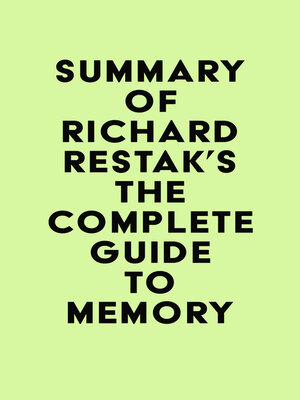
Sign up to save your library
With an OverDrive account, you can save your favorite libraries for at-a-glance information about availability. Find out more about OverDrive accounts.
Find this title in Libby, the library reading app by OverDrive.



Search for a digital library with this title
Title found at these libraries:
| Loading... |
Please note: This is a companion version & not the original book. Book Preview:
#1 Memories are the end products of our efforts in the present to recover information that is stored in our brain. They are different from pictures or videos of events from the past, which can serve as memory stimulators but are not themselves memories.
#2 The art of memory is the art of attention. The attention that Johnson referred to is an internal attention: riveting your mental powers on a single external object. Lacking attention to the parking place, you could only form an imperfect memory.
#3 The answer is (a). Failure to perform secondary to forgetting overlearned procedures can be worrisome. The longer we have been doing something, the less likely we will forget it. So how much of a change does this represent. If you were only a middling player, your current decreased performance probably doesn't qualify as a major memory concern.
#4 The second principle of memory operation is to create meaning. A name is not meaningful unless you come up with a link between that name and a vivid picture or auditory association. This is the science of mnemonics: the use of a pattern of numbers, letters, images, or associations to assist in remembering something.






